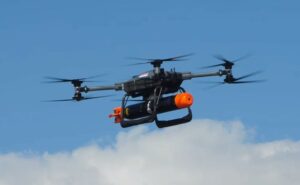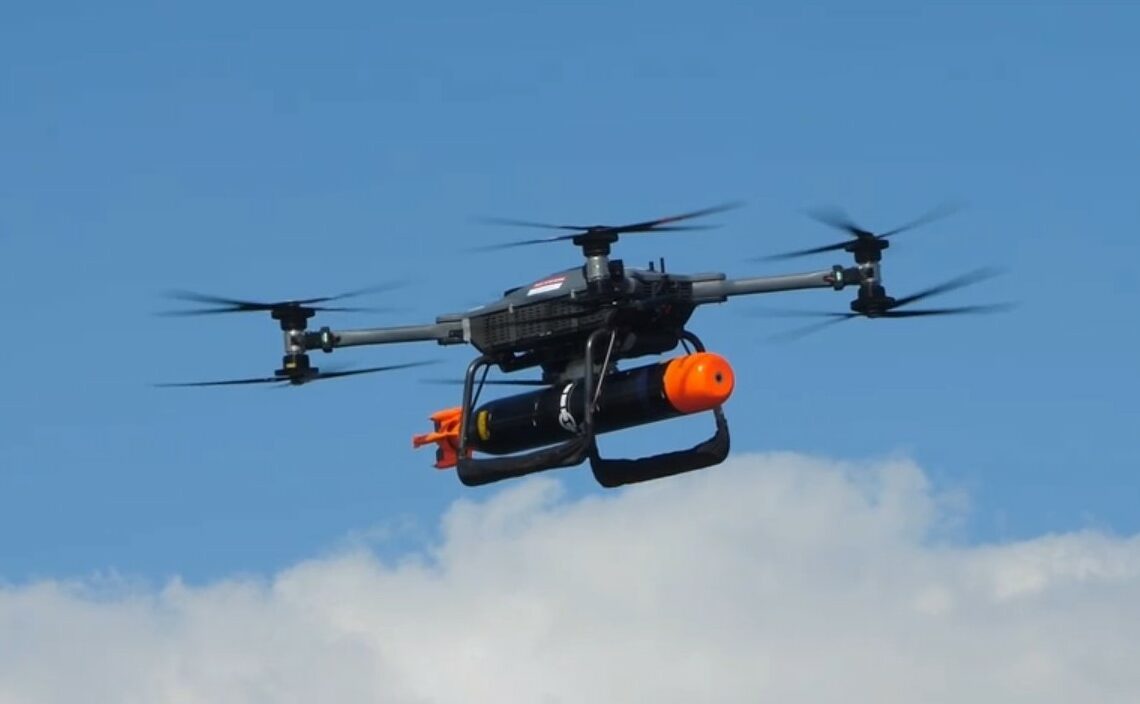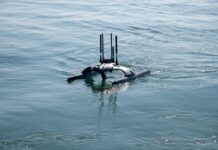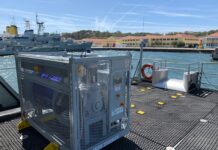BAE Systems and Manroy Aeronautics have demonstrated the ability of the T-600 heavylift uncrewed aerial vehicle (UAV) to release a torpedo, BAE Systems announced on 27 September 2023.
The demonstration happened during NATO’s REPMUS (Robotic Experimentation and Prototyping using Maritime Uncrewed Systems) 23 exercise, which involved 15 NATO nations and was hosted by the Portuguese Navy at Sesimbra, near Lisbon, from 11-15 September. During the exercise a T-600, an electrically powered, multi-rotor UAV about the size of a small car, successfully released an inert BAE Systems Sting Ray anti-submarine torpedo during a flight mission at sea for the first time.
The T-600 is quoted as having a payload of 200 kg, can travel at up to 140 km/h and has a range of up to 80 km, depending on its payload.
The Sting Ray Mod 1 lightweight torpedo, which is normally launched by surface ships, helicopters or maritime patrol aircraft, has a warshot weight of 267 kg, putting it at the very limit of the T-600’s carrying capacity. However, the T-600 is effectively the demonstrator for a new all-electric heavylift UAV called the T-650, which is being designed to offer rapidly reconfigurable capabilities in the areas of automated logistics and resupply, casualty evacuation (casevac) and anti-submarine warfare (ASW).
The T-650 programme sits within FalconWorks: the new centre for advanced and agile research and development within BAE Systems’ Air sector.
The T-600/Sting Ray demonstration at REPMUS is the result of BAE Systems’ Air and Maritime Services sectors collaborating to find new and novel ways to combine emerging technologies alongside Malloy Aeronautics, L3 Harris and General Dynamics UK, who were all partners in the demonstration.

Neil Appleton, head of sustainable electric products at BAE Systems Air, was quoted by the company as saying, “In just two years since we launched our collaboration with Malloy, we’ve developed a heavylift UAS and, working with the UK Royal Navy and Portuguese Navy, have taken part in the latest NATO REPMUS exercise. The demonstration showcased the capability of our T-600 technology demonstrator, carrying an inert Sting Ray torpedo in front of the world’s premier naval forces. It’s a fantastic achievement in our collaboration with Malloy and a sign of our joint ambitions to bring new capabilities to our customers.”
Dave Quick, head of underwater weapons at BAE Systems Maritime Services, was quoted as saying, “Our development of Sting Ray Mod 2 is focused not only on weapon effectiveness once deployed but also in increasing the ways in which Sting Ray can be deployed. As part of this we are extending the breadth of platform interfaces supported and are maturing new torpedo deployment mechanisms, including drones, to explore the operational benefits to anti-submarine warfare and or anti-torpedo defence.
“Uncrewed aircraft systems [UAS] can be quick to launch and easy to carry,” Quick added. “They represent another opportunity to keep higher-cost assets and their crew out of harm’s way and will have an increasing ASW role alongside crewed helicopters and dedicated ASW surface vessels. UAS-launched Sting Ray would enable torpedo capability to be carried by a variety of naval platforms, providing increased operational flexibility for the use of Sting Ray.”
Oriol Badia, CEO of Malloy Aeronautics, was quoted as saying, “At Malloy Aeronautics we are committed to turning concept ideas into real capabilities fast. Our smaller T-150 UAS have been tested and operated for years by the UK [Ministry of Defence] and US [Department of Defense], but the T-600 has gone from concept to operational demonstrator in record time for a vehicle in this payload class. The collaborative success seen at REPMUS adds to the list of promising capabilities being tested with this platform (last-mile resupply and casevac) and proves that modular, multi-mission UAS can reduce the logistics burden and increase operational tempo at a fraction of the cost.”








